The government is pushing to introduce a cap-and-trade system for carbon dioxide as early as next year. But the plan faces lingering divisions among policymakers and businesses, and the uncertain future of a new global treaty to fight greenhouse gas emissions.
The trading mechanism is a key instrument for Korea’s goal of reducing greenhouse gas emissions by 30 percent below “business-as-usual” levels until 2020. The voluntary target was set late last year as part of President Lee Myung-bak’s low-carbon, green growth vision.
The Ministry of Environment is drafting an emission exchange scheme, planning to send a related bill to the National Assembly within this year and implement the system in 2011.
Under the program, the government imposes emissions caps on companies and organizations and those that succeed in cutting emissions below their quotas are allowed to sell remaining allowance.
The World Bank valued the global carbon market at $144 billion last year, up 6 percent from 2008 in spite of a global recession. The figure is projected to grow to $170 billion this year.
The European Union’s Emissions Trading Scheme is the world’s largest carbon trading bourse, making up 64 percent of the total sales volume in 2009, worth $118 billion.
Voluntary trading in the U.S. is growing at the regional level, led by the Chicago Climate Exchange established in 2003. A federal cap-and-trade bill has been stuck in the Senate though it passed the House more than a year ago.
New Zealand is the only country that runs economy-wide and mandatory system outside Europe.
Korea’s Presidential Committee on Green Growth unveiled an expanded framework for green growth early this year consisting of a carbon trading legislation, tax incentives for energy saving and green technologies to promote.
The central government initially planned launch a pilot trading scheme early this year. The plan was delayed because the government needed more time for coordination and preparation.
The government has been cautious on launching a mandatory, national system due to mounting concerns over business strains.
The move also lost steam as U.N. climate talks in Copenhagen last year failed to generate a new climate change deal to replace the Kyoto Protocol. Global momentum has been hit by legislative delays and the contraction of carbon markets in advanced countries.
Leaders from 194 countries are due to finalize binding post-Kyoto climate actions at this year’s climate summit in Cancun, Mexico in December.
But the Ministry of Environment, the main driver of the trading policy, pins hopes on support from a growing number of major local governments, civic groups and businesses.
This year, some provincial governments launched their own cap-and-trade market on a trial basis. Major companies announced their commitments to the program in a bid to enhance their environment-friendly credentials.
“The cap-and-trade bill is essential for the country to achieve the emissions goal,” the ministry’s climate change and air quality policy division director Lee Min-ho said, referring to the nation’s 2020 plan to curtail emissions by 30 percent.
Emission trading enables Korea to efficiently reduce externalities of development and lay solid foundation for sustainable growth, he added.
“It means we create a carbon market that gives incentives to companies for their efforts,” he said.
The ministry said last year that it will set up a platform at the Korea Exchange for more than 600 public and private organizations expected to participate.
Lee said the system derives a number of economic effects by inducing companies to develop low-emission technologies and invest in renewable energy.
Korea is the world’s ninth-largest polluter. Its growing economy has increased greenhouse gas emissions by more than 100 percent since 1990.
The government announced in 2008 a plan to inject 40 trillion won ($35.8 billion) into solar, wind and fuel cell ventures through public-private partnerships through 2015 as part of its promotion of clean energy sources.
Companies in the alternative energy sector are actively supporting the carbon exchange, Lee said. “It’s a major reduction factor in their field.”
The administration had planned to launch a pilot trading scheme early this year with a goal of slashing up to 2 percent of emissions compared to the annual average from 2005 to 2007. A total of 641 organizations including municipalities, public agencies, firms and retailers were supposed to take part in the three-year pilot scheme.
But the process was hampered by growing concerns that the steep cut would only benefit other emerging countries like China, which compete with Korea in global markets. Energy-intensive local firms such as steelmakers and auto manufacturers would move abroad to avoid tight regulations, opponents said.
“Many in the business community still continue to express serious concerns that we may lose our competitive edge,” then Minister of Knowledge Economy Choi Kyung-Hwan said in a press briefing. “Some say the burden would deal a fatal blow to our growth potential.”
He noted that Korea’s economic growth relies heavily on the manufacturing sector, many of which are energy-intensive industries like steel and petrochemicals, which take up nearly 40 percent of the country’s energy consumption.
“Our livelihood depends on how well we do overseas as 70 percent of gross domestic product comes from trade,” Choi said. “So the slightest increase in costs means we could lose business. There are fears companies would abandon their businesses here and rush to relocate overseas.”
According to a report by the Korea Energy Economics Institute that showed petrochemicals would see a 10-percent drop in production if emission targets are implemented.
Choi added that no country has yet succeeded in trimming emissions when it seeks to lift up its per capita income level to 30,000 from 20,000, as Korea does.
“So why, despite all these hardships, did Korea decide on such a bold figure, especially when we are not obligated to do so?” he said.
Under the Kyoto Protocol, a climate regime formed in 1997 with an aim to fight global warming, Korea has no binding emission cut target. Advanced countries are mandated to trim down by 25 percent to 40 percent.
Seoul declared its ambition at the United Nations Climate Change Conference held in Copenhagen, Denmark in Dec. 2009. The 30-percent reduction was the highest figure among volunteer countries.
High administrative costs could be a burden to society, said Kim Sang-hyup, co-secretary general to the Presidential Committee on Green Growth.
“It’s too complex to make a market for carbon emissions,” Kim said on the sidelines of the 11th World Knowledge Forum in Seoul last month.
Critics have claimed that the scheme itself is so complicated that “almost no one understands it,” because it entails a multitude of environmental, economic and political factors on top of high operating expenses.
Lee at the environment ministry also pointed out that carbon trading comes with high administrative costs because of “must-be-accurate” data management.
Still, Kim said the system is an inevitable destination for the country on its way to green growth.
“We need to move from burning tax to earning tax,” he said, indicating the government’s consideration of adopting a carbon tax. “We’ll try out an emission trading scheme and then go from there.”
In September, Korean ministries launched a greenhouse gas and energy target management system by listing 470 public and private institutions to oversee.
The designated organizations must set up targets for energy saving and emission cuts by September 2011. They will face fines of up to 10 million won ($8,950) if they fail to meet their goal after warnings, starting 2012.
Since the adoption, Lee said businesses have complied with the management plan, which is a prelude to a carbon trading system.
“Since they know what it is about, they will see its market values at the bourse as well as incentives,” he said.
Members of the Federation of Korean Industries some of which were once skeptical are positive about the new market opportunity.
“The concept (of emission trading) is unfamiliar and frankly somewhat burdensome, but our members are trying to cooperate,” an FKI official said. “They are working hard to secure low-carbon technologies, while recognizing it as a global trend and a matter of common interest.”
Some local governments have already set out their own trading schemes.
Seoul City hosted its first emission exchange on Sept. 13-17. It ran a test program in April.
A total of 47 public and private firms made 115 transactions for 654 tons of emissions, worth more than 19 million won.
The Seoul Metropolitan Government set the price at 22,800 won per ton at the exchange as of Sept. 10, based on the European Climate Exchange Market’s price of 15.44 euro per ton.
Ulsan Metropolitan City, about 306 kilometers south of Seoul, opened its online carbon market in June where 228 tons of emissions were traded.
In the latest cyber trading in September, 32 public agencies sold or bought 316 tons of emissions, valued at about 3.7 million won.
The nation’s seventh-largest metropolis has actively promoted the system as one of the 14 model carbon markets the environment ministry designated. Its trading target for this year is 18,806 tons.
Once the national scheme is drawn up, businesses will converge in the central bourse and public organizations will continue their transactions mainly online, the ministry’s Lee noted.
By Shin Hyon-hee (heeshin@heraldcorp.com)
The trading mechanism is a key instrument for Korea’s goal of reducing greenhouse gas emissions by 30 percent below “business-as-usual” levels until 2020. The voluntary target was set late last year as part of President Lee Myung-bak’s low-carbon, green growth vision.
The Ministry of Environment is drafting an emission exchange scheme, planning to send a related bill to the National Assembly within this year and implement the system in 2011.
Under the program, the government imposes emissions caps on companies and organizations and those that succeed in cutting emissions below their quotas are allowed to sell remaining allowance.
The World Bank valued the global carbon market at $144 billion last year, up 6 percent from 2008 in spite of a global recession. The figure is projected to grow to $170 billion this year.
The European Union’s Emissions Trading Scheme is the world’s largest carbon trading bourse, making up 64 percent of the total sales volume in 2009, worth $118 billion.
Voluntary trading in the U.S. is growing at the regional level, led by the Chicago Climate Exchange established in 2003. A federal cap-and-trade bill has been stuck in the Senate though it passed the House more than a year ago.
New Zealand is the only country that runs economy-wide and mandatory system outside Europe.
Korea’s Presidential Committee on Green Growth unveiled an expanded framework for green growth early this year consisting of a carbon trading legislation, tax incentives for energy saving and green technologies to promote.
The central government initially planned launch a pilot trading scheme early this year. The plan was delayed because the government needed more time for coordination and preparation.
The government has been cautious on launching a mandatory, national system due to mounting concerns over business strains.
The move also lost steam as U.N. climate talks in Copenhagen last year failed to generate a new climate change deal to replace the Kyoto Protocol. Global momentum has been hit by legislative delays and the contraction of carbon markets in advanced countries.
Leaders from 194 countries are due to finalize binding post-Kyoto climate actions at this year’s climate summit in Cancun, Mexico in December.
But the Ministry of Environment, the main driver of the trading policy, pins hopes on support from a growing number of major local governments, civic groups and businesses.
This year, some provincial governments launched their own cap-and-trade market on a trial basis. Major companies announced their commitments to the program in a bid to enhance their environment-friendly credentials.
“The cap-and-trade bill is essential for the country to achieve the emissions goal,” the ministry’s climate change and air quality policy division director Lee Min-ho said, referring to the nation’s 2020 plan to curtail emissions by 30 percent.
Emission trading enables Korea to efficiently reduce externalities of development and lay solid foundation for sustainable growth, he added.
“It means we create a carbon market that gives incentives to companies for their efforts,” he said.
The ministry said last year that it will set up a platform at the Korea Exchange for more than 600 public and private organizations expected to participate.
Lee said the system derives a number of economic effects by inducing companies to develop low-emission technologies and invest in renewable energy.
Korea is the world’s ninth-largest polluter. Its growing economy has increased greenhouse gas emissions by more than 100 percent since 1990.
The government announced in 2008 a plan to inject 40 trillion won ($35.8 billion) into solar, wind and fuel cell ventures through public-private partnerships through 2015 as part of its promotion of clean energy sources.
Companies in the alternative energy sector are actively supporting the carbon exchange, Lee said. “It’s a major reduction factor in their field.”
The administration had planned to launch a pilot trading scheme early this year with a goal of slashing up to 2 percent of emissions compared to the annual average from 2005 to 2007. A total of 641 organizations including municipalities, public agencies, firms and retailers were supposed to take part in the three-year pilot scheme.
But the process was hampered by growing concerns that the steep cut would only benefit other emerging countries like China, which compete with Korea in global markets. Energy-intensive local firms such as steelmakers and auto manufacturers would move abroad to avoid tight regulations, opponents said.
“Many in the business community still continue to express serious concerns that we may lose our competitive edge,” then Minister of Knowledge Economy Choi Kyung-Hwan said in a press briefing. “Some say the burden would deal a fatal blow to our growth potential.”
He noted that Korea’s economic growth relies heavily on the manufacturing sector, many of which are energy-intensive industries like steel and petrochemicals, which take up nearly 40 percent of the country’s energy consumption.
“Our livelihood depends on how well we do overseas as 70 percent of gross domestic product comes from trade,” Choi said. “So the slightest increase in costs means we could lose business. There are fears companies would abandon their businesses here and rush to relocate overseas.”
According to a report by the Korea Energy Economics Institute that showed petrochemicals would see a 10-percent drop in production if emission targets are implemented.
Choi added that no country has yet succeeded in trimming emissions when it seeks to lift up its per capita income level to 30,000 from 20,000, as Korea does.
“So why, despite all these hardships, did Korea decide on such a bold figure, especially when we are not obligated to do so?” he said.
Under the Kyoto Protocol, a climate regime formed in 1997 with an aim to fight global warming, Korea has no binding emission cut target. Advanced countries are mandated to trim down by 25 percent to 40 percent.
Seoul declared its ambition at the United Nations Climate Change Conference held in Copenhagen, Denmark in Dec. 2009. The 30-percent reduction was the highest figure among volunteer countries.
High administrative costs could be a burden to society, said Kim Sang-hyup, co-secretary general to the Presidential Committee on Green Growth.
“It’s too complex to make a market for carbon emissions,” Kim said on the sidelines of the 11th World Knowledge Forum in Seoul last month.
Critics have claimed that the scheme itself is so complicated that “almost no one understands it,” because it entails a multitude of environmental, economic and political factors on top of high operating expenses.
Lee at the environment ministry also pointed out that carbon trading comes with high administrative costs because of “must-be-accurate” data management.
Still, Kim said the system is an inevitable destination for the country on its way to green growth.
“We need to move from burning tax to earning tax,” he said, indicating the government’s consideration of adopting a carbon tax. “We’ll try out an emission trading scheme and then go from there.”
In September, Korean ministries launched a greenhouse gas and energy target management system by listing 470 public and private institutions to oversee.
The designated organizations must set up targets for energy saving and emission cuts by September 2011. They will face fines of up to 10 million won ($8,950) if they fail to meet their goal after warnings, starting 2012.
Since the adoption, Lee said businesses have complied with the management plan, which is a prelude to a carbon trading system.
“Since they know what it is about, they will see its market values at the bourse as well as incentives,” he said.
Members of the Federation of Korean Industries some of which were once skeptical are positive about the new market opportunity.
“The concept (of emission trading) is unfamiliar and frankly somewhat burdensome, but our members are trying to cooperate,” an FKI official said. “They are working hard to secure low-carbon technologies, while recognizing it as a global trend and a matter of common interest.”
Some local governments have already set out their own trading schemes.
Seoul City hosted its first emission exchange on Sept. 13-17. It ran a test program in April.
A total of 47 public and private firms made 115 transactions for 654 tons of emissions, worth more than 19 million won.
The Seoul Metropolitan Government set the price at 22,800 won per ton at the exchange as of Sept. 10, based on the European Climate Exchange Market’s price of 15.44 euro per ton.
Ulsan Metropolitan City, about 306 kilometers south of Seoul, opened its online carbon market in June where 228 tons of emissions were traded.
In the latest cyber trading in September, 32 public agencies sold or bought 316 tons of emissions, valued at about 3.7 million won.
The nation’s seventh-largest metropolis has actively promoted the system as one of the 14 model carbon markets the environment ministry designated. Its trading target for this year is 18,806 tons.
Once the national scheme is drawn up, businesses will converge in the central bourse and public organizations will continue their transactions mainly online, the ministry’s Lee noted.
By Shin Hyon-hee (heeshin@heraldcorp.com)


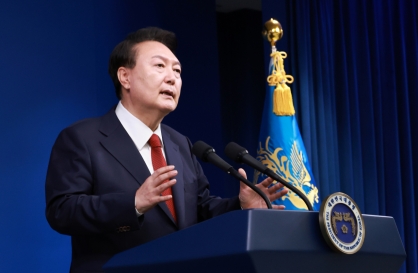


![[K-pop’s dilemma] Can K-pop break free from ‘fandom’ model?](http://res.heraldm.com/phpwas/restmb_idxmake.php?idx=644&simg=/content/image/2024/05/09/20240509050541_0.jpg&u=20240509173751)
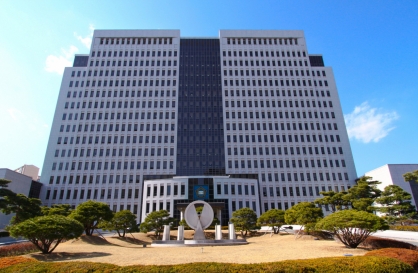



![[News Analysis] Yoon's first 2 years marked by intense confrontations, lack of leadership](http://res.heraldm.com/phpwas/restmb_idxmake.php?idx=644&simg=/content/image/2024/05/09/20240509050612_0.jpg&u=20240509233252)
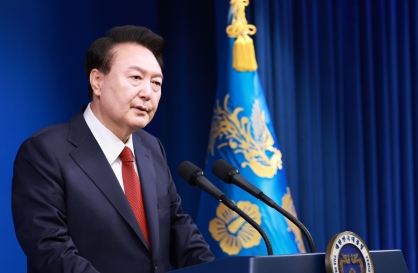


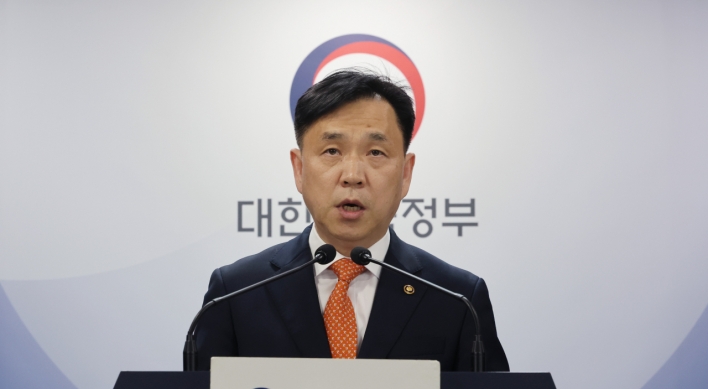
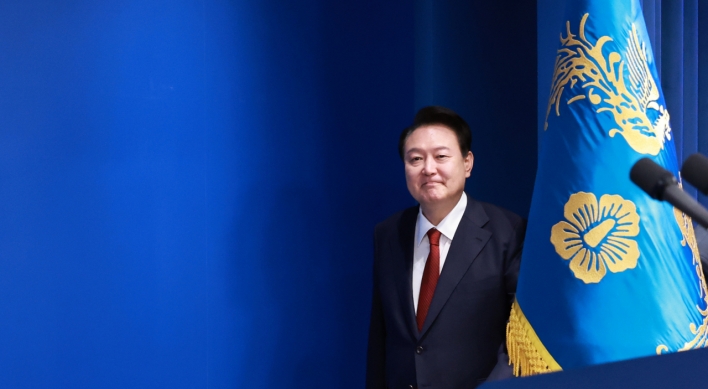

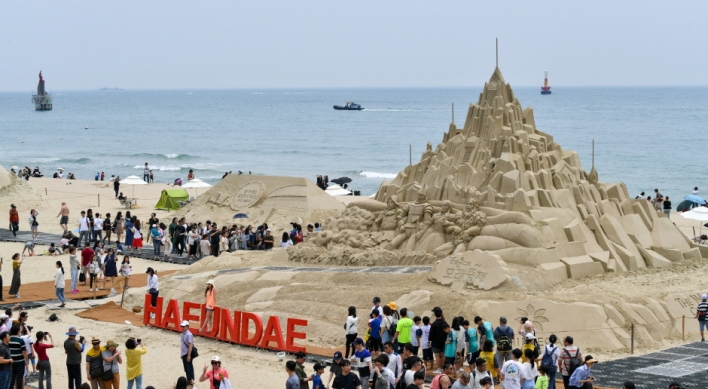
![[Today’s K-pop] NCT’s Mark to drop 1st solo album in February 2025](http://res.heraldm.com/phpwas/restmb_idxmake.php?idx=642&simg=/content/image/2024/05/10/20240510050597_0.jpg&u=)